Related Research Articles

Sir Patrick Alfred Caldwell-Moore was a British amateur astronomer who attained prominence in that field as a writer, researcher, radio commentator and television presenter. He was also a minor politician.
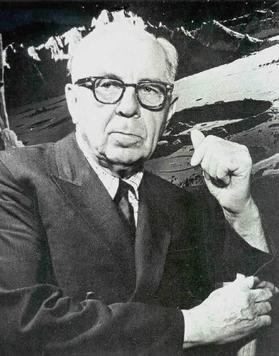
Chesley Knight Bonestell Jr. was an American painter, designer, and illustrator. His paintings inspired the American space program, and they have been influential in science fiction art and illustration. A pioneering creator of astronomical art, along with the French astronomer-artist Lucien Rudaux, Bonestell has been dubbed the "Father of Modern Space art".
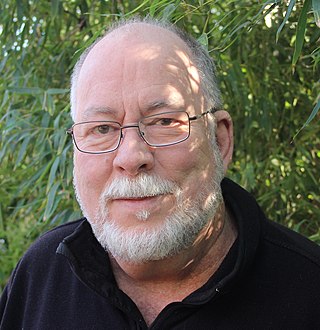
David Cherry is an American artist, author, and illustrator of science fiction and fantasy and has also done substantial work as a marketing artist, concept artist, and 3D modeler in the game production industry. Cherry served as Lecturer and Head of the Art Department as well as Head of the master's degree Program for artists at The Guildhall at SMU, a graduate college dedicated to studies for people who want to work in the game production industry. Cherry was also an attorney, as well as a past president of the Association of Science Fiction and Fantasy Artists (1988–1990). He has been nominated eleven times for Hugo Awards, and 18 times for Chesley Awards.
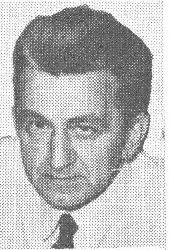
Frank Rudolph Paul was an American illustrator of pulp magazines in the science fiction field.

Destination Moon is a 1950 American Technicolor science fiction film, independently produced by George Pal and directed by Irving Pichel, that stars John Archer, Warner Anderson, Tom Powers, and Dick Wesson. The film was distributed in the United States and the United Kingdom by Eagle-Lion Classics.
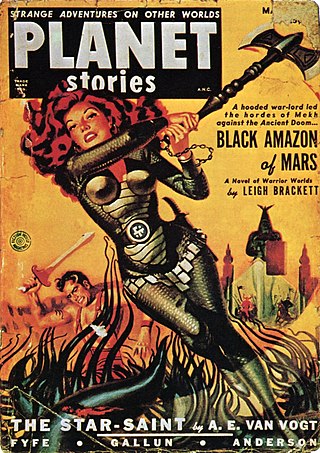
Planet Stories was an American pulp science fiction magazine, published by Fiction House between 1939 and 1955. It featured interplanetary adventures, both in space and on some other planets, and was initially focused on a young readership. Malcolm Reiss was editor or editor-in-chief for all of its 71 issues. Planet Stories was launched at the same time as Planet Comics, the success of which probably helped to fund the early issues of Planet Stories. Planet Stories did not pay well enough to regularly attract the leading science fiction writers of the day, but occasionally obtained work from well-known authors, including Isaac Asimov and Clifford D. Simak. In 1952 Planet Stories published Philip K. Dick's first sale, and printed four more of his stories over the next three years.

John Carl Schoenherr was an American illustrator. He won the 1988 Caldecott Medal for U.S. children's book illustration, recognizing Owl Moon by Jane Yolen, which recounts the story of the first time a father takes his youngest child on a traditional outing to spot an owl. He was posthumously inducted by the Science Fiction and Fantasy Hall of Fame in 2015.
The Chesley Awards are the "pinnacle award" for art in the science fiction and fantasy genre. Established in 1985 by the Association of Science Fiction and Fantasy Artists, the awards recognize individual artistic works and achievements during a given year. The Chesleys were initially called the ASFA Awards, but were later renamed to honor famed astronomical artist Chesley Bonestell following his death in 1986. The awards are presented annually, typically at the World Science Fiction Convention (Worldcon).

A science fiction magazine is a publication that offers primarily science fiction, either in a hard-copy periodical format or on the Internet. Science fiction magazines traditionally featured speculative fiction in short story, novelette, novella or novel form, a format that continues into the present day. Many also contain editorials, book reviews or articles, and some also include stories in the fantasy and horror genres.

Robert Paul Holdstock was an English novelist and author best known for his works of Celtic, Nordic, Gothic and Pictish fantasy literature, predominantly in the fantasy subgenre of mythic fiction.

Ron Miller is an American illustrator and writer who lives and works in South Boston, Virginia. He now specializes in astronomical, astronautical and science fiction books for adults and young adults.

Don Maitz is an American science fiction, fantasy, and commercial artist. He has twice won the Hugo Award for Best Professional Artist, science fiction's highest honor for an artist. His peers in the Association of Science Fiction and Fantasy Artists have honored him ten times with a Chesley Award for outstanding achievement, and he has received a Silver Medal of Excellence from the Society of Illustrators.
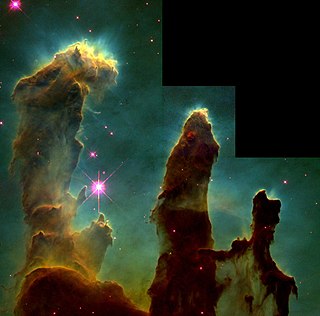
Space art or astronomical art is a genre of art that focuses on the universe as a frame of reference. Like other genres, space art has many facets and encompasses realism, impressionism, sculpture, abstract imagery, and zoological art. Though artists have long produced art with astronomical elements, the genre of space art itself began only when technological advancement allowed for more detailed observation of the night sky. Space art also attempts to communicate ideas related to space, often including an artistic interpretation of cosmological phenomena and scientific discoveries. In some cases, artists who consider themselves space artists use more than illustration and painting to communicate astronomy or works depicting space, with some working directly with spaceflight technology and scientists in attempts to expand the arts, humanities, and cultural expression relative to space exploration.

Duncan Alasdair Lunan, born October 1945, is a Scottish author with emphasis on astronomy, spaceflight and science fiction, undertaking a wide range of writing and speaking on those and other topics as a researcher, tutor, critic, editor, lecturer and broadcaster. He is known for his science writings as well as for his work on the Sighthill stone circle.
Don Dixon is an American astronomical artist practicing space art in the tradition of Chesley Bonestell.
Paul le Page Barnett, known by the pen name of John Grant, was a Scottish writer and editor of science fiction, fantasy, and non-fiction.

"Exhalation" is a science fiction short story by American writer Ted Chiang, about the Second Law of Thermodynamics. It was first published in 2008 in the anthology Eclipse 2: New Science Fiction and Fantasy, edited by Jonathan Strahan. In 2019, the story was included in the collection of short stories Exhalation: Stories.
Brian Moncrieff Lewis was a British science fiction illustrator, comics artist, and animator. In the 1950s, he illustrated covers for pulp magazines like New Worlds, Science Fantasy, and Science Fiction Adventures. In the 1960s, he drew adventure comic strips for Tiger, Boys' World, Hurricane, and Eagle. He also used a more cartoony style to draw humor comic strips for Wham!, Smash, Cor!!, and Buster. In the 1970s, Lewis focused on comics adaptations of television and horror film properties.
Edward Ignatius Valigursky was an American illustrator known for his portrayals of technology, and for his work in science fiction.
References
- ↑ "Hardy, David A". Encyclopedia of Science Fiction. 21 August 2023. Retrieved 17 February 2024.
- 1 2 Gustafson, Jon; Nicholls, Peter (1995). "Hardy, David A(ndrews) (1936- )". The Encyclopedia of Science Fiction (Updated ed.). New York: St Martin's Griffin. p. 542. ISBN 0-312-09618-6.